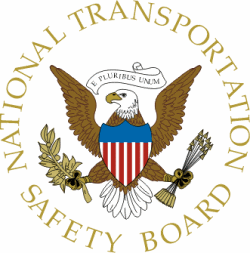Reaction To B737 Runway Overrun In Jamaica
The NTSB has issued a series of safety recommendations to the
FAA in response to an incident in which an American Airlines B737
overran the end of the runway on landing in Kingston, Jamaica in
December 2009. The aircraft landed approximately 4,000 feet down
the 8,911-foot-long, wet runway with a 14-knot tailwind component
and was unable to stop on the remaining runway length. After
running off the runway end, it went through a fence, across a road,
and came to a stop on the sand dunes and rocks above the waterline
of the Caribbean Sea adjacent to the road. While there were no
fatalities or postcrash fire, eighty-five of the 154 occupants (148
passengers, 4 flight attendants, and 2 pilots) received injuries
ranging from minor to serious. The airplane was substantially
damaged. Instrument meteorological conditions and heavy rains
prevailed at the time of the accident flight, which originated at
Miami, Florida, on an instrument flight rules flight plan.

As a result, the NTSB recommends that the FAA require principal
operations inspectors to review flight crew training programs and
manuals to ensure training in tailwind landings is (1) provided
during initial and recurrent simulator training; (2) to the extent
possible, conducted at the maximum tailwind component certified for
the aircraft on which pilots are being trained; and (3) conducted
with an emphasis on the importance of landing within the touchdown
zone, being prepared to execute a go-around, with either pilot
calling for it if at any point landing within the touchdown zone
becomes unfeasible, and the related benefits of using maximum flap
extension in tailwind conditions.
The FAA is also advised it should revise Advisory Circular
91-79, "Runway Overrun Prevention," to include a discussion of the
risks associated with tailwind landings, including tailwind
landings on wet or contaminated runways as related to runway
overrun prevention. Once Advisory Circular 91-79, "Runway Overrun
Prevention," has been revised, require principal operations
inspectors to review airline training programs and manuals to
ensure they incorporate the revised guidelines concerning tailwind
landings. The agency should further require principal operations
inspectors to ensure that the information contained in Safety Alert
for Operators 06012 is disseminated to 14 Code of Federal
Regulations Part 121, 135, and 91 subpart K instructors, check
airmen, and aircrew program designees and they make pilots aware of
this guidance during recurrent training, according to the
board.
The National Transportation Safety Board also reiterates the
following recommendation to the Federal Aviation Administration and
reclassifies it "Open-Unacceptable Response":
Require all 14 Code of Federal Regulations Part 121, 135, and 91
subpart K operators to accomplish arrival landing distance
assessments before every landing based on a standardized
methodology involving approved performance data, actual arrival
conditions, a means of correlating the airplane's braking ability
with runway surface conditions using the most conservative
interpretation available, and including a minimum safety margin of
15 percent.
 NTSB Prelim: Funk B85C
NTSB Prelim: Funk B85C Aero-News: Quote of the Day (11.21.25)
Aero-News: Quote of the Day (11.21.25) ANN's Daily Aero-Term (11.21.25): Radar Required
ANN's Daily Aero-Term (11.21.25): Radar Required Classic Aero-TV: ScaleBirds Seeks P-36 Replica Beta Builders
Classic Aero-TV: ScaleBirds Seeks P-36 Replica Beta Builders Airborne 11.21.25: NTSB on UPS Accident, Shutdown Protections, Enstrom Update
Airborne 11.21.25: NTSB on UPS Accident, Shutdown Protections, Enstrom Update



